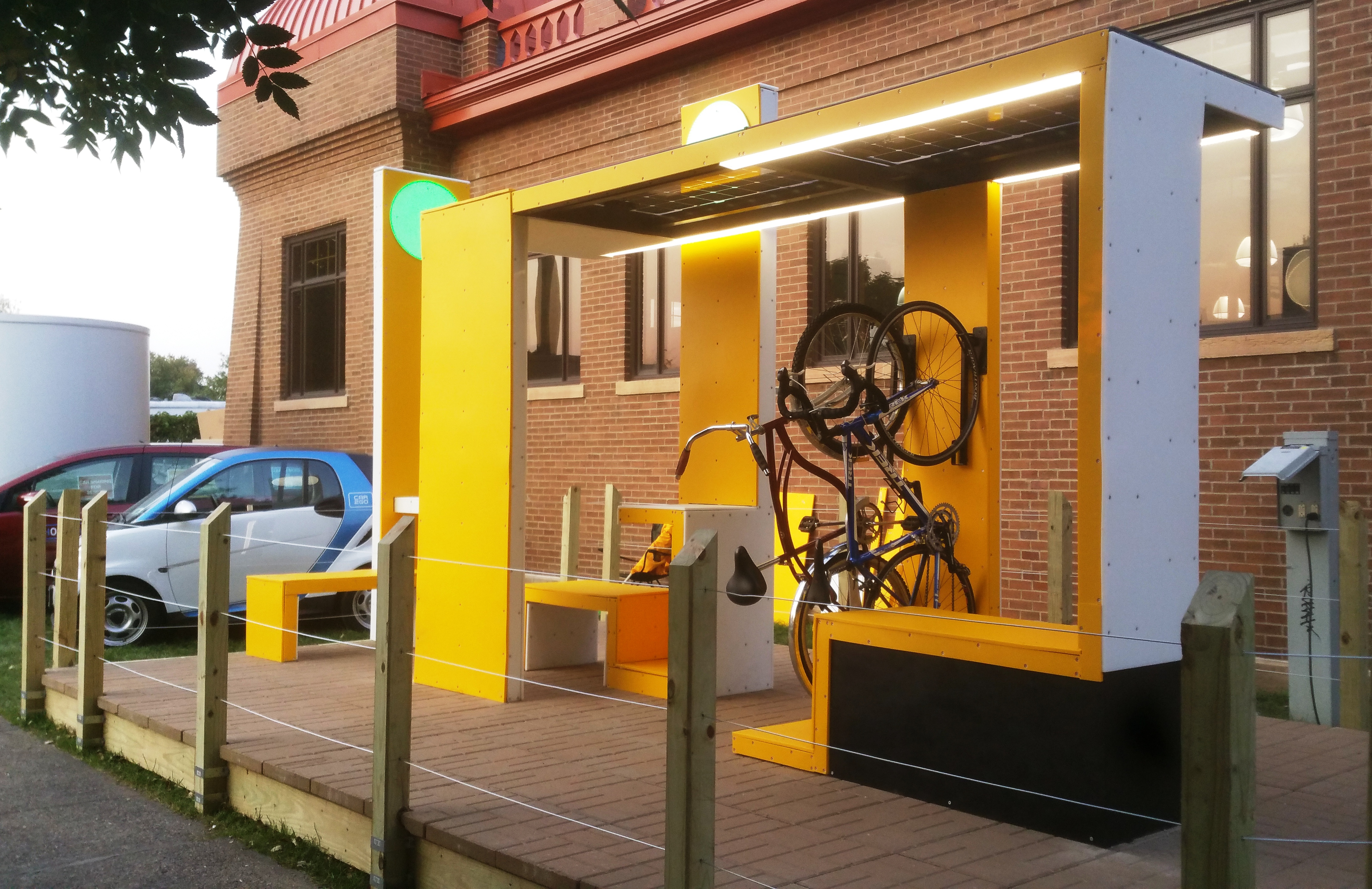 A student-designed waiting shelter with a reduced footprint and other innovative features is on display at the Minnesota State Fair.
A student-designed waiting shelter with a reduced footprint and other innovative features is on display at the Minnesota State Fair.
The shelter was designed by architecture graduate student Amy Van Gessel as part of a class at the University of Minnesota’s College of Design and School of Architecture. Mechanical engineering graduates Alex Beane and Andrew Frey also assisted in its creation.
Made of steel and recycled plastic, the shelter includes seating, a small tabletop, a bicycle rack and a light that could indicate the next expected bus departure. The shelter is four feet deep and 13-feet long, but can be adapted to site conditions and the expected ridership at a given bus stop.
Van Gessel said the design was partly inspired by a shelter from Paris that serves not just as a waiting area but a gathering space. The shelters include bike-sharing kiosks, lending libraries, tables and a few distinct seating areas.
“In most shelters, the only option is to sit,” Van Gessel said. “This is about providing more personal spaces.”
Fairgoers seeing the shelter outside the Eco Experience building have been struck by the shelter’s bold design but warm up to it on further inspection.
“It looks and feels very different than the traditional shelter, but once that kind of initial confusion wears off and people start kicking the wheels they start opening up and having some good comments and feedback,” said adjunct instructor James Garrett Jr, AIA, who led the design class.
Garrett Jr. is the owner of St. Paul-based 4RM+ULA, which helped design stations on the METRO Green Line and Target Field Station.
Metro Transit’s Engineering & Facilities department challenged students in Garrett’s class to design a shelter that could be used in areas with space constraints and would be powered without a utility connection. Solar panels atop the shelter provide power for the shelter.
The student’s work and input received at the State Fair will help inform future shelter plans.
Metro Transit is installing 30 shelters at new locations this year through the Bus Stop Improvements Program. Another 60 new shelters are being installed at sites in Minneapolis in a continuing effort to replace advertising shelters that were privately owned and managed until last year.
Enviro-Tech, radiustrack, Mattson Macdonald Young Structural Engineers, Gausman & Moore, Rosco, Lumos and Powerfully Green also partnered on the shelter design project.